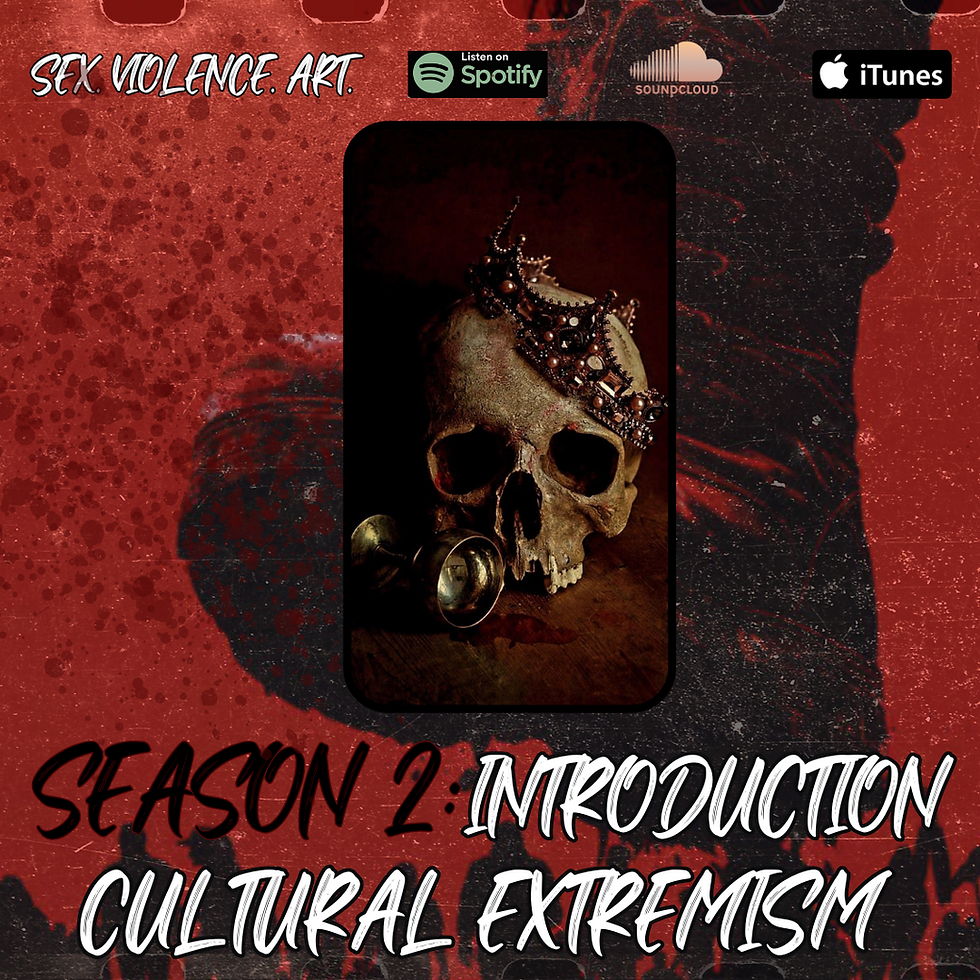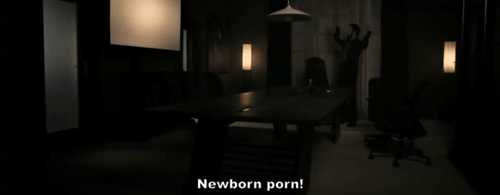Kelly's Taboo Terrors: Aftermath (1994)
- Horror Spinsters
- Mar 15, 2020
- 5 min read
Follow Kelly’s exploration into the darkest recesses of horror. Once a month her reviews take a twisted turn into the most graphic, disturbing, controversial, and obscure films the horror genre has to offer. These are immoral, indecent and offensive; the ugly films that few people talk about and even fewer dare to watch. The films that will stay with you long after the credits roll and infest your nightmares. Disclaimer: Movies that depict real animal harm for the sake of filmmaking will NOT be watched or discussed (ie: Cannibal Holocaust)
Viewers Discretion is Advised.
I attended a friend's funeral in February, so thoughts of death are on my mind. It seems appropriate to discuss a short “surgical horror” film that is highly regarded in the extreme horror community. It appears on many controversial films lists, is very expensive to buy ($70+ on Ebay and over $100 on Amazon), and it is surely not for the faint of heart. It’s time for March’s edition of Taboo Terrors, and I will be dissecting Nacho Cerda’s Aftermath. I promise you, there will be nothing left behind on this autopsy table!

Aftermath (1994), a 30 minute Spanish short film, is the second installment of Nacho Cerda’s death trilogy: The Awakening, Aftermath and Genesis. He claims that the trilogy is representative of the processes of death and Aftermath is exactly that: the end result after death. As part of his research for the film, Cerda visited morgues and witnessed live autopsies. During these autopsies, Cerda said that the bodies were “butchered from top to bottom’. To add to Aftermath’s authenticity, he then filmed it in a real morgue. This allowed him to explore his fascination with the visceral nature of death, as well as show the medical side of one of humanity’s biggest taboos, necrophilia.
Aftermath opens with the sounds of a car crash followed by a whimper, and then displays the maimed corpse of a dog (don’t worry, the gore is well done but the dog looks very goofy). It then leads us to where the majority of the film takes place: at the morgue. A morgue attendant wheels in the body of a woman (named Marta) to the freezer, where we are introduced to our Coroner played by Pep Tosar. After performing an autopsy and watching the other workers go home, he wheels in our female victim, Marta, who died in that opening car crash. Once on the slab, the Coroner takes a good look at the body and is immediately aroused: he starts heavily breathing and holding onto her face, fondling it. The events to come are perverse, violent, and extremely misogynistic (maybe?).

From here Aftermath takes on a fetishistic, voyeuristic gaze of the woman’s dead body. We are seeing Marta as the Coroner does. He delicately cuts off her clothing and runs a knife gently down her body before cutting into it. He then caresses the knife like a phallus, cleaning off the blood before the next sexual act - stabbing her in the vagina over and over like he is aggressively fingering her. The Coroner continues to be aroused and climaxes a few times over the remainder of the runtime, his primal urges satisfied while the violent defiling of the woman’s body carries on.
Aftermath challenges you; not only to watch the scenes unfolding but your thoughts on death. If you are dead, can your corpse still be considered a person? Without life, can there be agency? And without agency, without the ability to give consent, can we be violated? Can you rape a corpse?
In the book Spanish Horror Film by Antonio Lazaro-Reboll, he states - about Aftermath - that “Whereas detractors of the film have focused on the gore and necrophiliac credentials of the film, its defenders have stressed that necrophilia is derived from the character’s pathology, that the actions are shot in a distanced and clinical manner…” Whether it’s for taming (The Woman), curiosity (Dead Girl), or science, a woman - feral or dead - is a sexual object to be used and discarded. The Coroner did not fuck the male corpse he had been previously working on but waited until everyone left so he could have the woman all to himself, without witnesses. This isn’t to say that he doesn’t fuck other corpses, but the film doesn’t show us anyone but Marta. Multiple interviews with Nacho Cerda -- and defenders of the film -- dismiss the inherent (potential) misogyny of Aftermath.

As the Coroner cuts the underwear off the corpse, we are privy to a close up of her vulva. He playfully twirls the knife around her nipple. These acts are not for the female audience - but is 100% for men. We don’t get to know anything about the Coroner, even his name, despite the fact that the majority of the runtime is spent with him in the morgue. Aftermath ends with the Coroner at home, unphased by his work, and with the obituary of the woman he desecrated left on his dining table. He has no respect for the dead. But should he?
I am not exactly sure how I feel about Aftermath. From a visual/cinematic point of view, Aftermath is lovely. From the opening moments to the title screen, there is Lacrimosa (from Mozart's Requiem Mass) playing, providing an air of elegance to a brutal film. The juxtaposition of the beautiful music alongside the sterility of the environment is jarring and I love it. It gives warmth to a place that is uninviting. The practical effects are superb with highly realistic blood and corpse work by DDT.

Aftermath is wonderfully shot (cinematography by Christopher Baffa - Nip/Tuck, Glee) with the coolness of the blue filter added to make you feel the chill that is oftentimes present in a clinical environment. The contrast of the bright red blood, representing life and virility, against the steel table, makes for a complicated experience -- but so does the subject matter. Aftermath is moody and sophisticated but completely nihilistic.
Death is the absence of life, and if you are a non-believer in the afterlife (like myself), there is no comfort in death. We are just lumps of quickly decaying meat waiting to be preserved for whatever memorial rites are to take place.

Aftermath is no Nekromantik (1987). Nekromantik has a sensuality to it, a romanticism, whereas Aftermath is a pure, unadulterated assault on a lifeless human body. It’s aggressive and angry. There are no villains, no protagonists to root for, just death.
We are born, it’s something that just happens to us, but it doesn’t matter what your spiritual or religious beliefs are, or how good of a person you try to be, death fucks you in the end and goes home to feed the dog.
I would give Aftermath a ⅘ on the Nightmare scale for realistic set pieces, pessimism, dead vulvas, and knife fucking.



Comments